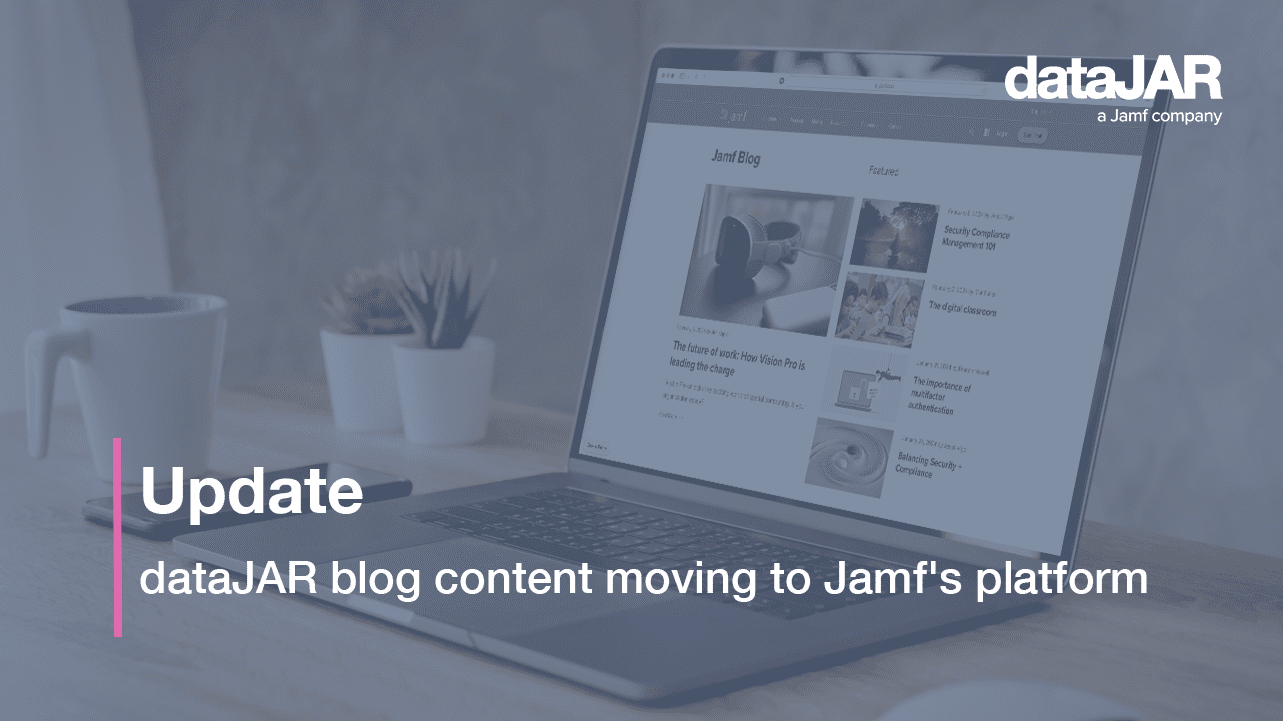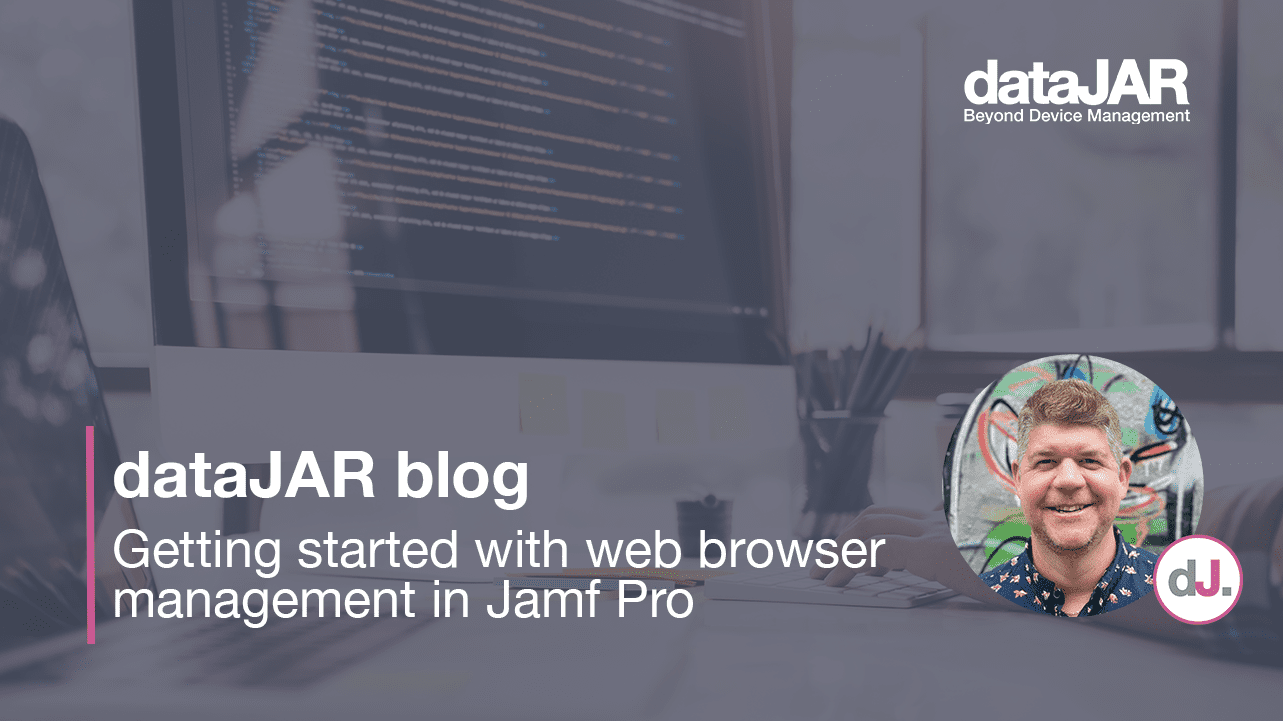My remote employee onboarding experience

Opening disclaimer
I must acknowledge I feel extremely fortunate to have found a new role in these unusual and difficult times. The global pandemic has enforced change in many of our everyday lives, including how and where we work. I wish anyone who has found themselves displaced because of the pandemic the utmost success in looking for their next role. Remain positive – often from adversity comes great opportunity.
Just as the first lockdown was easing in late July, I started at dataJAR in the role of partner manager.
Similarly to other organisations, a return to a normal office environment had not happened at that point, and for many it still has not, with COVID control measures in place for those who are able to return to their place of work. Since lockdown 2.0, most of us are back working from an at-home location. Now, some four months into my role, I have still not been to our office or met with any of the team face to face.
Yet I do feel connected and part of the team, so what has my experience been like?
The technology on-boarding process was fully remote and self enabled/self sufficient, with my Apple hardware and accessories shipped directly to my home.
The hardware and accessories:
- Apple MacBook Air
- Accessories: keyboard, trackpad, laptop stand
- Additional display/monitor
- Apple AirPods Pro
The software tools: (best of breed) – as you can see we believe in delivering the same great experience internally as we do for our customers.
- Apple Business Manager
- datajar.mobi
- Jamf Connect
- Okta
- BambooHR – HR as Directory Master
- dataJAR Defend – Anti-Malware
Productivity and Collaboration:
- Google WorkSpace – G-Suite
- Zoom
- Slack
- Ring Central
- Xero
- Trello
- LucidChart
The operational perspective – Self Start:
Accounts were registered by our admin and activated securely using a one-time access code via secure one-time message.
Remote onboarding requirements were all sent out as tasks from BambooHR.
Use of Trello with a dedicated employee onboarding board to track progress for the individual.
What made a difference and enabled the process to feel more natural?
Honestly, the people and the culture of the company.
It is the little things that count, in fact it is the sum of many small things. The regular check-ins with the rest of the team and connected workforce – in a remote working environment a sense of belonging and team membership is vital and key to the success of remote working.
dataJAR is well versed with technical support teams working primarily from remote or home locations.
Every morning each team member sends a good morning message on Slack – you are only ever a Slack message away from contact or help.
Everyone in the team always turns on their camera in Zoom. It does not matter if you are working in your bedroom or have a dedicated workspace in your home. It is not the same as being in the same room, but it is the best we have right now – and it does work.
I know from experience on Zoom calls with team members during the onboarding process, having the camera on really does make a difference.
There are a number of dedicated Slack channels for teams and numerous subjects to interact with.
All tools have been set up correctly to enable effective collaboration and communication across the teams.
The journey; a great employee on boarding experience.
Is it a product you can buy off the shelf? No.
Some of the questions organisations have been or should be asking themselves:
- How do you address the ‘new normal’ of working from anywhere, primarily a home office location?
- What makes a great remote/home digital workplace?
- What are the factors to consider in building the future working environment?
- What are the ingredients of the new overall working experience?
From my time working at IBM and the Mac @ IBM program, here are some key takeaways that remain true today, even more so since the arrival of COVID-19:
- Culture – providing a modern digital workplace is not a cost take-out exercise. Aim to deliver a great experience – user experience is your first priority.
- Innovation – strive for continuous innovation. Embrace and encourage open and honest feedback. Feedback is a gift.
- Tooling – best of breed platforms, fully integrated.
- Intuitive, Safe and Secure – self-enabled employees.
Secure, intuitive, simple.
Conclusion:
My remote onboarding experience at dataJAR has been a great one, although I must admit I am looking forward to the day I can meet face to face with the other team members in the office. I do believe the COVID-19 global pandemic has changed the way we will work in the future. Work can be done effectively from anywhere, as long as the right tools and security measures, ensuring a great user experience, are maintained.
It is possible to deliver a great remote onboarding experience that is secure and engaging but also feels natural. It is down to having the right tools and processes integrated seamlessly together but most importantly, a great (company) culture.
Embrace change with an agile mindset, let go of the legacy, make the most of the future.
Transformation is an ongoing continuous journey, incremental and iterative.
Start small, it is the sum of many parts that feed into the overall end-user experience.
Organisations need to focus on providing their teams/employees with the best end-user experiences, while keeping them secure.
It is now more important than ever to ensure the security of endpoints and devices as enterprises adapt to work from anywhere.
Building the right culture is more than just collaboration, it is a sense of ‘we are all in this together’. Encourage a culture where everyone supports and looks out for each other and has fun, otherwise it is just not worth it.
Enjoy what you do.




